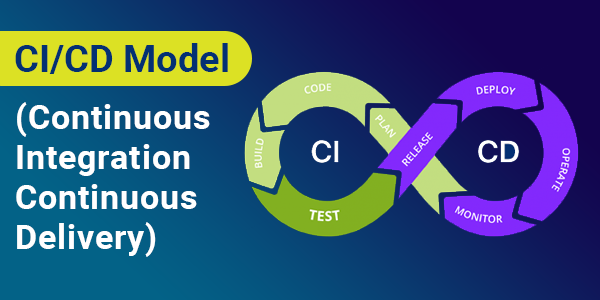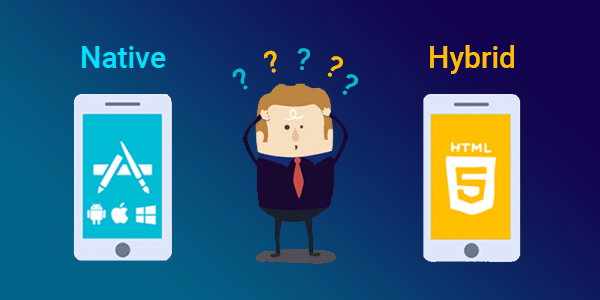How To
Build Effective and Scalable Web Applications – The Best Practices

A big part of any web application development is its capacity to scale in the later growth stages. Irrespective of the project time, its attributes, or the user group you’re targeting, the system must be capable enough to handle an influx of more than expected number of users. System downtime and slow speed can have a negative impact, especially if you’re new to the market. It is why you must be extra vigilant because there will be times when your system cannot comprehend the extra load and lacks the necessary flexibility. However, there are some easy ways you can prevent this mishap from happening and work on application scalability before the development phase kicks in.
Here we discuss what scalable web application means and how to create a system that can process huge user streams without experiencing unexpected breakdowns. Take note on how to build high-performance and scalable web application development because there are so many factors to consider. Fortunately, you can avoid common pitfalls that lead to disrupted user experience and negatively impact profit margins.
What is scalability in web application development?
Let’s understand this with a classic example.
In 2004, Facebook had over one million users.
By 2016, this number had increased to almost two billion. However, one thing that has remained constant is their site experience. A user, as soon as pops open their Facebook account is flooded with new newsfeed updates and they can quickly browse their way through the app without any extra loading time or hassle. In a nutshell, this is what scalability in web application development means. Most enterprises invest in scalable websites these days to empower the solutions with the continuously growing customer base. However, it must be previously planned in advance so that when you’re developing a scalable web application, you employ the correct scaling architecture for the same.
To explain scalable web applications, scalability means the ability of your web application to cope and handle the increasing number of users simultaneously with the app. The user experience of a scalable web application is such that it feels like they’re the only ones interacting with it because it’s so quick and relevant. Consequently, a scalable web application that performs well and offers impeccable experience with one or thousands of app users can easily manage the ups and downs in their website traffic.
Coming to the next part of the discussion, the factors that influence the scalability of web applications, these include:
- A scalable web architecture with a clean code design: The app framework you choose plays a huge role in building scalable web applications.
- App load testing: Load testing allows you to identify and remedy the weak codes in your application to ensure a smooth and seamless performance.
- App hardware: The processor, memory, RAM, hard drive, etc., influence the scalability of your web applications.
- Third-party services: You obviously would want to integrate your scalable web applications with preferred third-party services to improve its productivity. However, you need to be careful during selection, since wrong choices can lead to operational failure.
Scalability is of utmost importance in a web application since it sets the standard for your services. Understanding scalability involves studying the principles from a design and development perspective to ensure you have an architecture mesh that can support your business as it grows and expands.
What are the major challenges with web application scaling?
For developing a scalable web application, several necessary factors need to be considered. Some of these include:
best practices to build scalable web applications
The following are some best practices to keep in mind when developing scalable web applications.
Choosing the right technology
Well, obviously, scalability is not an afterthought. It needs to be in the process sheet from the time you plan on designing the web application. And the first thing you need to do is use the right technology. There are three essential components of picking the right tech stack.
Programming language: The first choice is the programming language since that will significantly impact the scalability of your web app. You need to pick a language that allows communication between different physical machines.
Database: You need to pick a database that supports your scalability goals. You can choose from any of the available NoSQL databases built with scalability in mind. You might have to consider different databases for different workloads.
Communication: As microservices are increasingly replacing monoliths, you need to ensure that the communication channel between your services is also scalable. You might have to use a loosely coupled system that will allow you to scale your services independently as and when the demand arises.
| Must Read : How Artificial Intelligence in Mobile Banking is a Game-Changer? |
Implement best security practices
Although there is no way you can predict the security attacks on your system, you can employ methods to help reduce the chance of running into web app security issues. Start with good firewall protection to block anyone outside of your organization from accessing the system. Then, configure the user directory to allow for updating of user information in real-time. Moreover, apply role management-based authentication to restrict access to authenticated users only.
Optimize your network architecture for application performance
While focusing on scalable web app development, do not neglect the network layer in virtualized environments. Examine the network settings in this environment and optimize them for top-level performance-cache data in-between servers. In case data become stale, it can result in network bottlenecks when moving data around the caches. Tuning cache systems allow you to keep track of data that can be cached and prevents traffic bottlenecks from becoming an issue.

Test your scalable web application
Once you're done with developing and designing the web applications, it's time to test it. Test your app to see how well it can perform under high-traffic conditions. Load test your scalable web app to test and explore it on a realistic load pattern and then simulate different traffic scenarios. Remember that high traffic might not work well for your app if it is not built for scalability and high-level user performance.
Avoid single point of failure
Can the failure of a single point in your app system crash your entire app? Can your app crash if the server running your database fails? These are defined as a single point of failure. If the change in any one of your app components becomes the reason for your app's downfall, it is the single point of failure, and you must prevent such points at all costs. To do so, you need to replicate everything. Run your database on multiple servers so that even if one backend code backfires, the others can balance the load.
Push your logic to the clients
In the case of programming languages like PHP, .Net, or . Nodejs code, the backend code, is the actual logic. The only issue is that when a client requests anything, you have to put your server to work. And if multiple clients start making multiple similar requests, your server has a problem.
However, there is another side to the story. You cannot always trust the client. They might compromise and override the logic, which is why you need to try and strike a balance. Only port the logic that is required. To do so, there are many tools you can use. Moreover, pushing logic to the client-side will reduce server load and make your app scalable and efficient.
| Also Read : How Digital Transformation Impacts Software Development Services? |
Employ asynchronous communication for optimal resource allocation and utilization
Asynchronous communication is how you can handle thousands of requests simultaneously. With asynchronous programming, you can quickly process I/O and CPU-bound requests. Asynchronous practices like reactive programming are the right solution for building web apps that are scalable, interactive, resilient, and driven by events.
Summing it up
So, you understand now what scalability means and how it impacts your business. But with the proper practices, framework, database, and architecture, you can save millions of dollars. At Triazine, we've built scalable web applications for several of our clients and assisted them in coping with the increasing demand for flawless and seamless application performance. Our team utilizes the right resources to help with upscaling and downscaling requirements in higher and lower traffic situations on the scalable web app.
Book a free call with our experts, and we can provide you with the right solution.
Featured Articles
Latest Articles

How to Build Effective and Scalable Web Applications – The Best Practices
A big part of any web application development is its capacity to scale in the later growth stages. Irrespective of the p .. Read More
By | Oct 22, 2021

How Artificial Intelligence in Mobile Banking is a Game-Changer?
Let’s start this discussion with a simple question, how many of you still stand in queues outside banks just to get ge .. Read More
By | Oct 14, 2021

Utility mobile application development role in the digital transformation
What is utility mobile application development and why it matters?At this point, mobile applications have become an inal .. Read More
By | Oct 11, 2021

How to build a successful and agile offshore development team?
As a global trend, outsourced software development holds a market size of $92.5 billion, and a significant chunk of .. Read More
By | Sep 30, 2021

What is VAPT and does your organization need it?
What is VAPT and does your organization need it? To no one's wonder, there is a flood of applications and softwar .. Read More
By | Sep 08, 2021

The top 11 FinTech trends to achieve digital transformation
The top 11 FinTech trends to achieve digital transformation Similar to other industrial verticals heavily impacte .. Read More
By | Sep 08, 2021

The Next Normal: The Top 10 digitization trends for enterprises in 2021 and beyond
The Next Normal: The Top 10 digitization trends for enterprises in 2021 and beyond Nobody knew where 2020 and 202 .. Read More
By | Sep 07, 2021

CI/CD Model: what and why it matters in software development
CI/CD Model: what and why it matters in software development There was a time when software development wa .. Read More
By | Jun 08, 2021

What Is Legacy Migration and Why to Consider It
What Is Legacy Migration and Why to Consider It? Software technologies and applications are on the road to an ine .. Read More
By | May 25, 2021

What Makes CMMI Appraisal Necessary for Software Development Companies ?
What Makes CMMI Appraisal Necessary for Software Development Companies? During software development, your product .. Read More
By | May 10, 2021

The Top 11 Mobile App Development Trends You Must Know for 2021
The Top 11 Mobile App Development Trends You Must Know for 2021 We all have so many expectations from 2021, don� .. Read More
By | May 04, 2021

2- Why to choose react native for mobile app development project?
React Native for mobile app development: Is it the right choice? For the 21st century, mobile phones are like sou .. Read More
By | May 04, 2021

How Digital Transformation Impacts Software Development Services
Digital Transformation and its impact on Software Development Lifecycle Today's industrial landscape ta .. Read More
By | May 03, 2021

What is the right price for developing a mobile app?
What is the price to develop an iPhone app? Or rather, how much does mobile app development cost? Well, Kudos to you bec .. Read More
By | Apr 07, 2021

Should I use Flutter for my next Mobile App Development project?
So, what was the mobile app development story before Flutter? Let's consider mobile application develo .. Read More
By | Mar 17, 2021

Is there any right pricing strategy for mobile app development?
No phrase can appropriately describe the accelerating mobile app development market! Definitely, it is on a consistent b .. Read More
By | Feb 22, 2021

Mobile App Development: Freelancer or a Software Development Company
So, you’ve decided to build software, and now you’re faced with the debatable and inevitable question: software dev .. Read More
By | Jan 21, 2021

Hybrid Mobile App Vs. Native Mobile App… Am I Making A Right Choice?
This seems to be a million-dollar question when it comes for making a choice between hybrid mobile app or native mobile .. Read More
By | Jan 11, 2021

5 trends that will be influencing mobile app development in 2019
We live in a smartphone-driven world and mobile apps are now an integral part of our lives. From day-to-day commute to g .. Read More
By | Jun 11, 2019

